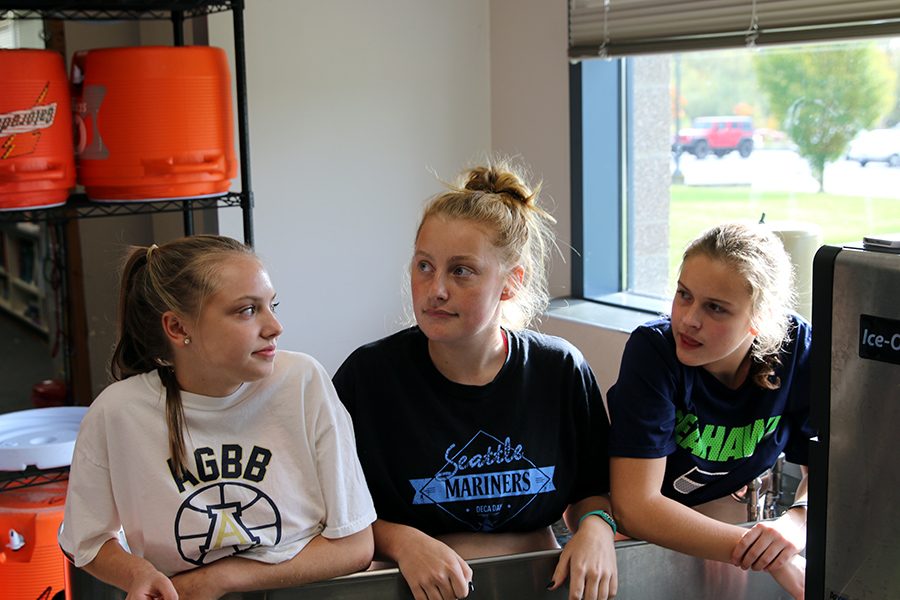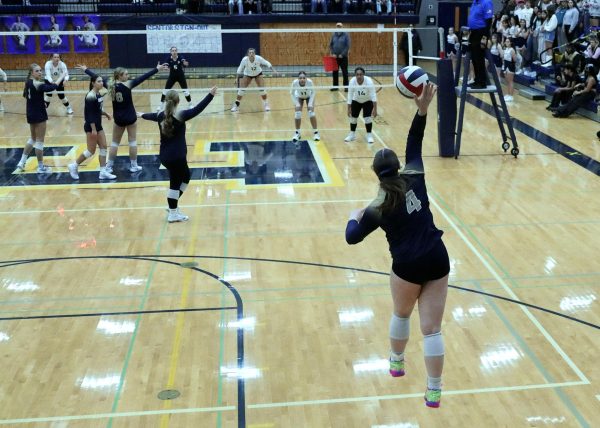Ice, Ice Bathing
Kate Morris (’19), Charlize Beamer (’19), and Brittany Anderson (’19) prepare for their race at Cedarcrest Golf Course in Marysville on Friday, September 30th.
Soreness is an issue not only athletes must overcome; it’s a struggle anyone who’s taken a gym class has experienced. Most students at Arlington High School ignore the built-up lactic acid and wait until their body flushes it out a few days later. For many athletes, they take different methods of combating their soreness. Senior swimmer Christina Domanski says, “I normally just stretch and roll out. It takes about 20 minutes.”
Freshman cross country runner Ivy Ewing has a different approach. “I ice bath almost everyday.” Running around 7 days a week, the young runner finds herself constantly sore. “I thought it wouldn’t help that much, but it really does,” says Ewing.
Cross country coach and chemistry teacher Jon Murray wishes his runners would take better advantage of the sports medicine’s ice bath for the benefits. “About three years ago, I felt like garbage on a Friday run, and I was going to be racing the next day, and it may’ve been in my top five worst easy runs I’ve ever been on, like I felt horrible. And I was like what about tomorrow? Well, I went home and ice bathed. The next day and had one of the greatest races I’ve ever had, feeling wise.” Murray explained why his ice bath could’ve helped his performance. “When you take an ice bath it constricts all your blood vessels, and when it constricts them, your body’s natural response is to open them up wider than were previously going into the ice bath. And so when they open wider, it allows more blood flow, which means more oxygen which means faster recovering. It also reduces the swelling and those types of things.”
For anyone wanting to indulge in ice bathing, Murray shares his tips. “Always bring nice warm clothes for afterwards because it does bring down your body temperature and especially this time of year, because you’re walking home, walking to your car, and you getting chilled real quick. Usually for [cross country], waist down is most important, unless you get some other kind of injury. There’s also the fact that some people put too much ice. You don’t even need that much ice. There’s actually scientific research that says you need just cold water, just from the tap, you don’t need ice. So people make it too cold sometimes. You don’t need to go that far. It’s kind of like building mitochondria on long run going too fast, you don’t need to, even though you build mitochondria slow and fast.” He recommends that athletes ice bath “twelve hours out if you can. If you do it the day of, sometimes that’s going to leave you stiff, and not leave you room to perform. So usually the night before.”
One of the boys’ varsity cross country team under Murray’s wing, Favian Villanueva (‘19) ice baths every Wednesday and Friday. “I saw the seniors, aka Eric and KJ, do it, so I started to do it more frequently this year.” Leading up to a big race, the sophomore runner prepares by taking ice baths, draining his legs, eating healthy food, and going to bed earlier than normal. Villanueva finds ice bathing, while it numbs his toes, to definitely be worth it.













